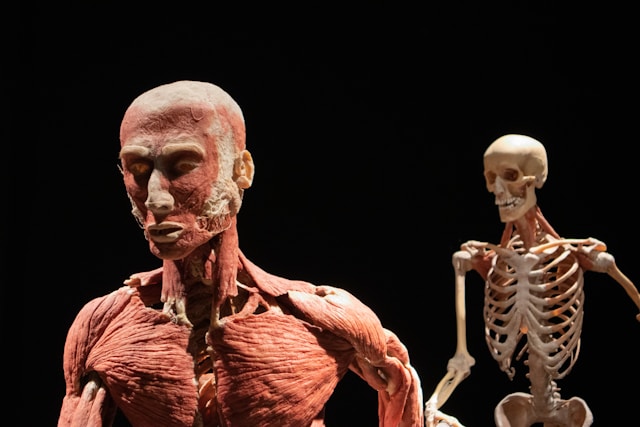In addition to adding a terrifying element to the film’s legacy, the disclosure that the 1982 supernatural horror classic “Poltergeist” used actual human skeletons as props sparks a nuanced discussion about the relationship between authenticity, ethics, and artistic expression in cinema. “Poltergeist,” which was produced and directed by the renowned Steven Spielberg and Tobe Hooper, made a name for itself in the horror genre by fusing inventive special effects with an engrossing plot and eerie atmosphere. The 1982 Movie Poltergeist Used Real Skeletons As Props – Tymoff, Beyond its artistic accomplishments, however, the picture is surrounded by a ghoulish intrigue because real human remains were used, a choice that is still as intriguing as it is contentious.
The Uncovering of the Actual Skeletons
The disturbing aspect of “Poltergeist’s” story, which depicts suburban dread and paranormal disturbances, is the use of actual human skeletons as props by the filmmakers. This choice sharply contrasts the film’s technological prowess with a somber dose of realism. It is especially noticeable in the film’s climactic pool scene, where JoBeth Williams’ character faces the spectral horrors menacing her family. In an effort to save costs for visually striking sequences, the production crew located real human skeletons and made the argument that the cost of artificial copies was significantly more than that of the original items. This practical but macabre decision was not exclusive to “Poltergeist” at the time, but it stands out now because of the movie’s widespread release and the following attention it garnered.
Standards for the Industry and Ethical Concerns
The choice to employ genuine skeletons presents difficult moral dilemmas regarding the bounds of artistic expression and the moral obligations of filmmakers. The respect due to the deceased, whose bodies were used for entertainment without their permission, is at the center of this discussion. Although this conduct was not legally clear at the time, it predated the extensive set of ethical rules and principles that the entertainment business has since evolved. These contemporary guidelines, which highlight the respect and dignity due to human remains, are a reflection of a larger social movement in favor of more responsible behavior. The “The 1982 Movie Poltergeist Used Real Skeletons As Props – Tymoff” event is a key illustration of how business procedures have changed, encouraging modern filmmakers to give greater thought to the moral ramifications of their artistic choices.
Effect on Authenticity and Special Effects
The utilization of actual skeletons in “Poltergeist” underscores the extent to which filmmakers have traditionally gone to attain authenticity and realism while adhering to technological limitations. The foundation of cinematic realism prior to the development of computer-generated imagery (CGI) and sophisticated animatronics was practical effects, which forced filmmakers to use inventive—and occasionally unethical—techniques to engross their audience. Because the movie uses real human remains, it highlights a significant period in the history of filmmaking when ethical concerns and the need for visual realism collided. It makes one consider the importance of realism in narrative and the possible expenses involved in achieving it. The 1982 Movie Poltergeist Used Real Skeletons As Props – Tymoff.
Contemporary Cinema and Moral Guidelines
These days, technological advancements and higher ethical standards have drastically changed the filmmaking environment, changing how stories are portrayed on screen. The use of real human remains is no longer necessary thanks to advanced computer graphics and animatronics, which provide filmmakers with a plethora of creative options without the moral dilemmas that come with using real skeletons. Furthermore, the strict rules controlling the handling and portrayal of delicate materials, such as human remains, demonstrate the industry’s ethical progress. This evolution highlights the significance of ethical issues in the creative process and reflects a broader cultural and professional commitment to upholding human dignity.
In summary
In the history of filmmaking, The 1982 Movie Poltergeist Used Real Skeletons As Props – Tymoff” symbolizes a difficult period characterized by the confluence of technological constraints, creative aspirations, and moral considerations. This part of the movie’s making serves as a sharp reminder of how moral standards in the entertainment business are always changing and how the question of what constitutes acceptable artistic expression is still up for debate. The legacy of “Poltergeist” serves as a reflection point and a cautionary tale for filmmakers as they negotiate these problems; it reminds us that, in the pursuit of cinematic quality, authenticity must be balanced with respect and integrity.
